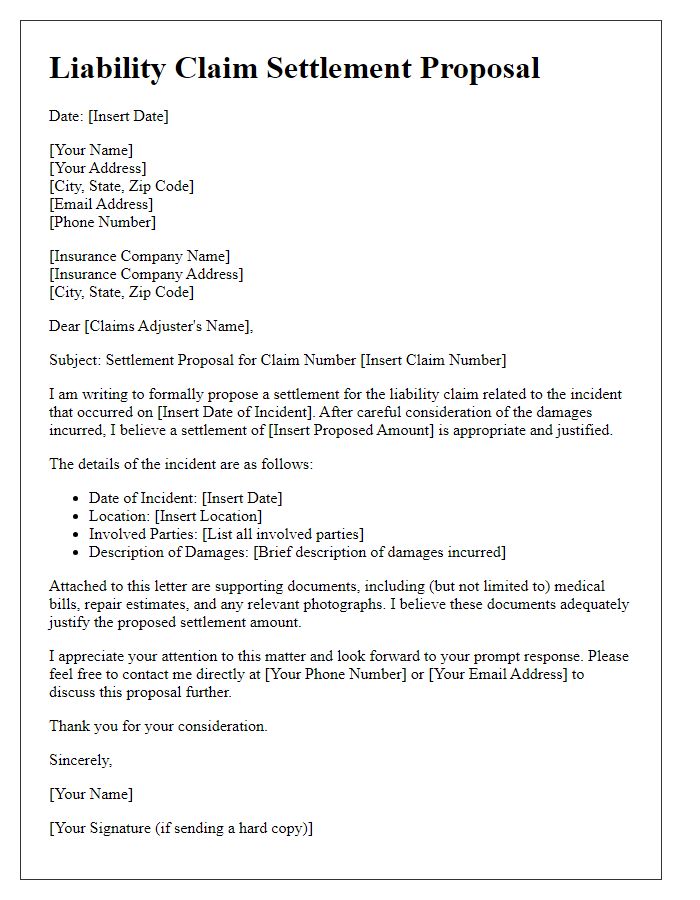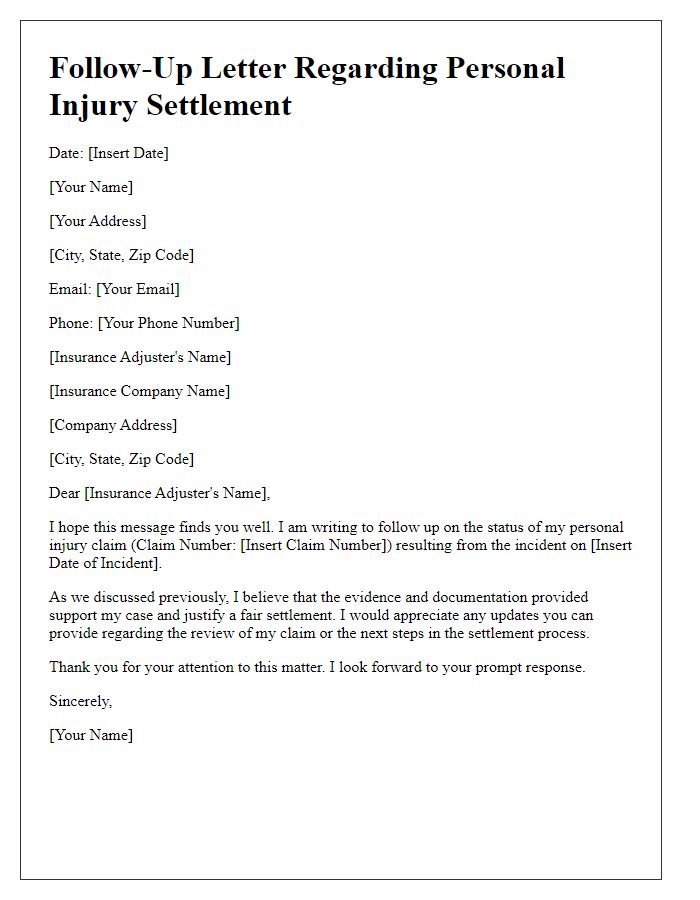When it comes to negotiating a personal injury settlement, having the right letter template can make all the difference. Crafting an effective letter not only conveys your situation clearly but also sets the stage for fruitful discussions with insurance companies or opposing parties. It's essential to present your case with compelling details and a confident tone to emphasize the validity of your claims. Ready to learn how to create a powerful letter that gets results? Read on for tips and a comprehensive template!

Clear Identification of Parties and Incident
In a personal injury settlement negotiation, clear identification of parties involved is crucial for establishing the context. The injured party, referred to as the plaintiff, might be an individual, such as John Doe, a 35-year-old marketing professional residing in Chicago, Illinois. The opposing party, known as the defendant, could be an entity like XYZ Corporation, a transportation company liable for the incident. The incident may refer to a car accident that occurred on July 15, 2022, at the intersection of Main Street and First Avenue, where a company vehicle collided with the plaintiff's sedan, resulting in significant injuries, including a fractured wrist and whiplash. Documentation detailing the police report number, case ID, and medical records will further substantiate the circumstances surrounding the incident, aiding in a clearer understanding during negotiations.
Detailed Account of Injuries and Impact
Personal injuries sustained in a vehicular accident on December 15, 2022, resulted in multiple fractures. The collision, occurring at the intersection of Maple Street and 5th Avenue, involved a negligent driver who failed to yield. Injuries included a broken left arm (humerus fracture), requiring surgery and metal plates for stabilization. Additionally, severe contusions and whiplash affected neck mobility and chronic pain. Rehabilitation therapy sessions, conducted twice a week for six months, contributed to mounting medical expenses totaling approximately $15,000. Physical limitations hindered daily activities (e.g., inability to lift objects), affecting employment as a construction worker, leading to a loss of income estimated at $10,000. Emotional distress and anxiety related to driving have also emerged, requiring therapy. Overall, injuries have significantly impacted quality of life, daily functioning, and financial stability.
Comprehensive Medical Documentation and Expenses
Comprehensive medical documentation is crucial in personal injury settlement negotiations, as it provides a detailed account of injuries sustained, treatments received, and associated costs. Medical records, such as X-rays, MRI scans, and surgical reports, should detail specific injuries, like fractured bones or soft tissue damage. Itemized bills from healthcare providers, including emergency room visits and rehabilitation sessions, can add up to significant expenses, sometimes exceeding thousands of dollars. Expert testimony from medical professionals can also establish how injuries impact daily life and work capacity, reinforcing claims for compensation. Documenting follow-up appointments, medication prescriptions, and ongoing therapies illustrates the long-term effects of the injury, making a stronger case for the necessary financial support.
Articulation of Liability and Causation
In personal injury cases, establishing liability (legal responsibility) and causation (connection between the injury and the actions of the responsible party) is crucial. Specific incidents, such as a car accident on Main Street, where the at-fault driver, identified as John Doe, ran a red light, resulting in severe injuries to another driver, Jane Smith, illustrate this. Medical records, including hospital bills exceeding $50,000, and testimony from witnesses who observed the accident at the intersection contribute to demonstrating how Doe's negligence directly caused Smith's injuries. Furthermore, police reports filed on the day of the accident, dated March 17, 2023, corroborate the events, reinforcing the case for holding Doe accountable for Smith's medical expenses and suffering. This comprehensive articulation of liability and causation is essential for successful negotiation in the settlement process.
Specific Settlement Demand and Justification
A specific settlement demand for a personal injury case highlights the required compensation for damages incurred, such as medical bills, lost wages, and emotional distress. For instance, if the injury resulted from a car accident on Highway 101 in California, medical expenses may total $30,000 accrued from hospital treatments and therapies. Additionally, lost wages could amount to $15,000 due to a sustained inability to work over a six-month recovery period. Pain and suffering compensation might be justified at $50,000, given the severity of the injuries sustained from the collision, impacting everyday life and emotional well-being. Totaling these figures, a comprehensive settlement demand of $95,000 can be proposed, supported by detailed documentation of all incurred costs and loss of income, in an effort to facilitate resolution outside of court.













Comments